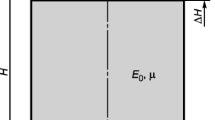Abstract:
Chord length distributions describe size, shape and spatial arrangement of geometrical objects (particles). The chord length distribution is in principle proportional to the second derivative of the correlation function of small-angle scattering. It is calculable from a relative measurement of the scattering intensity I(h). In structure research, the characterization of numerous particle systems can be achieved by comparing experimental chord distributions with theoretical ones, provided the latter are available with sufficiently high precision for a lot of fundamental, universal shapes. Both sides of this concept are exemplified: – the step from a relative measurement of the scattering intensity of an isotropic two-phase sample to the chord length distribution (errors in and in , limited h-interval, corresponding to the region (1-2) nm < r in real space, must be observed); as well as the geometric matter of calculation of chord distributions as fingerprints for basic geometric figures, including the non-convex case.
Similar content being viewed by others
Author information
Authors and Affiliations
Additional information
Received 15 March 1999 and Received in final form 26 April 2000
Rights and permissions
About this article
Cite this article
Gille, W. Chord length distributions and small-angle scattering. Eur. Phys. J. B 17, 371–383 (2000). https://doi.org/10.1007/s100510070116
Issue Date:
DOI: https://doi.org/10.1007/s100510070116




